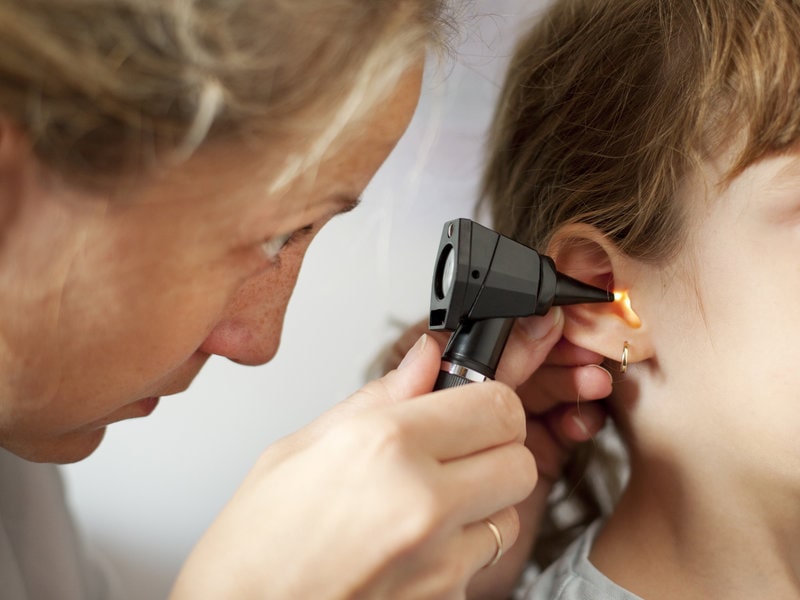Most common diseases of the ear

We often suffer from ear problems, most of the time of no great importance. Here are some of them.
It is frequent that we suffer temporary diseases in our ears due to external agents. Most of the time they are the result of factors that we cannot avoid, so if in any case you suffer from any of these five hearing pathologies mentioned below, do not panic. You only have to go to a specialist if the symptoms become worse.
He knows the common pathologies of the ear:
Hearing loss
Hearing loss is an ear condition that results in partial deafness or severe hearing loss. The symptoms usually manifest themselves in different ways. Sounds may be perceived as louder than they really are, difficulty in following the thread of conversation when there are several interlocutors, greater difficulty in understanding female voices than male voices, difficult to distinguish between high-pitched sounds or voices that are mumbled…
There are also other somewhat more complex symptoms such as loss of balance or feeling dizzy (more common in an acoustic neuroma), pressure in the ear or tinnitus.
Currently, there are different types of hearing loss: sensorineural, conductive or mixed hearing loss. The first occurs in the inner ear, and the second is a disease of the outer and middle ear.
When it occurs in a prelingual stage, that is, before the baby begins to speak, it may not present any symptoms. However, in some cases, alarming symptoms may occur, such as the baby not reacting to noises or not being able to warn of something by babbling.
As a rule, every newborn should have a hearing test to detect such problems. But if they are not observed until later, then a paediatrician should be consulted and a tone audiometry, a speech audiometry, and an impedance measurement should be performed.
In no case is this pathology part of rare diseases of the ear.
Bilateral hearing loss
This condition occurs when there is a hearing loss in both ears at the same time and to the same degree. It can occur for several reasons, but the most common are excessive exposure to a very high source of sound, the passage of age or also genetic factors.
In this case, the most common treatment is the use of hearing aids in both ears, depending on the degree of deafness. Another common treatment would be surgery.
The diagnosis for bilateral hearing loss
In order for a hearing aid to be implanted in the ear of a person with hearing loss, it is necessary to have had a previous ear examination to determine the degree of loss. If the hearing loss is very severe, the other common treatment to consider would be surgery.
Ménière’s disease
It’s reasonably common. It occurs when the fluid in the labyrinths, located in the inner ear, has too high a pressure. These labyrinths, along with another nerve in the skull, help the body maintain its balance.

When Ménière’s disease appears, it is symptomized in various ways, but the most common is loss of balance or annoying dizziness. Variable hearing loss or tinnitus is also very common. Perhaps the most annoying is vertigo, with the symptoms that it entails: nausea, vomiting, permanent sensation of dizziness…
There is no known effective treatment for Ménière’s Disease but, as recommended by the Medtronic website, it has been proven that diuretics and low-salt foods can significantly alleviate symptoms.
Tympanosclerosis
This condition is due to sequelae from periods of inflammation in the middle ear. Normally, with tympanosclerosis, the tympanic membrane is affected, but the oval window, the round window and the ossicles may also be involved.
Symptoms may range from mild to severe hearing loss. Depending on the severity of the hearing loss, surgery may or may not be necessary to treat it.
How to avoid tympanosclerosis?
If tympanosclerosis has been treated late, hearing aids are one of the most effective hearing solutions for treating this ear disease and restoring hearing.
Tympanic perforation
A hole or rupture in the eardrum, also known as the tympanic membrane, which is caused by a very loud noise near the ears, an object inside the ear, an injury…
It manifests itself with mild pain, discharge, tinnitus and dizziness. For treatment, most of the time, if the perforation is small, it can heal on its own. If the injury is more serious, patches on the tympanic membrane or a gel should be used.
When these ailments are more serious or start to be very painful, you will have to go to a specialist who can treat the pathology in question more closely.
